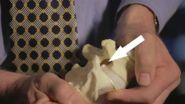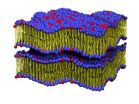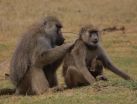(Press-News.org) Singapore—An international team of scientists from Singapore, Thailand, China and Australia has cracked the genetic code of the liver fluke parasite, Opisthorchis viverrini, using a unique DNA analysis technique developed at A*STAR's Genome Institute of Singapore (GIS).
GIS's DNA analysis technique has allowed the researchers to further study the biology of Opisthorchis viverrini to understand the cause and the eventual development of treatments for bile duct cancer, a condition caused by the parasite. The breakthrough was published in the scientific journal Nature Communications.
Opisthorchis viverrini is a trematode that infects millions in Asia, and it is classified as a Group 1 carcinogen by the International Agency for Research on Cancer (IARC). It is also a significant risk factor for Cholangiocarcinoma (CCA) or bile duct cancer. This parasite is endemic to some countries in Southeast Asia including Northeastern Thailand, Laos and Cambodia, with only 96 per 100,000 cases being reported in these countries. Despite its prevalence, there is no vaccine and only one drug (praziquantel) available to counter the parasitic worm.
The fluke enters the human body through the ingestion of raw or undercooked contaminated fish. Once in the small intestines, the worm migrates to the liver's bile ducts, where it lodges, feeds and matures. It is not known for certain how the fluke causes cancer. One widely accepted hypothesis is that the fluke secretes a protein mimicking the human growth hormone, granulin, which is extremely potent at stimulating cell growth and proliferation and is therefore highly regulated in the body. Infected individuals however, are constantly exposed to granulin-like proteins secreted by flukes, which subsequently cause host cells to proliferate uncontrollably, leading to tumour growth.
By mapping out the genes of this parasite, researchers aim to better understand its molecular pathways. This will help them identify new biological markers which could potentially be developed into powerful diagnostic tools and effective treatments for parasite-specific diseases.
This research was part of an international collaboration involving team leads, Dr Niranjan Nagarajan and Professor Patrick Tan from Sinagpore's GIS, and Dr Neil Young and Professor Robin B. Gasser from Australia's University of Melbourne, and others from Thailand and China.
"This study gives deep new insights into the life of a parasitic fluke in the human bile duct, and was enabled by the development of an exciting new genome assembly tool called OPERA-LG in our lab. It has allowed us to assemble and characterise the largest parasitic worm genome studied to date," said Dr Niranjan Nagarajan.
Professor Tan added, "This work builds on our earlier work to complete the picture of host and pathogen genetics of cholangiocarcinoma. These new genomic resources provide a foundation for systems biology investigations of host-pathogen interactions, with a view to uncovering new treatment strategies."
"GIS is constantly developing new genome analytic techniques to realise the huge potential of genomics in finding future cures. The success in sequencing the genome of the liver fluke is a testament of our capabilities to help scientists take their research a level up towards medical discovery," said Professor Ng Huck Hui, Executive Director of GIS.
INFORMATION:
Notes to Editor:
The research findings described in the media release can be found in the Nature Communications journal, under the title, "The Opisthorchis viverrini genome provides insights into life in the bile duct" by Neil D. Young1*, Niranjan Nagarajan2*, Suling Joyce Lin2, Pasi K. Korhonen1, Aaron R. Jex1, Ross S. Hall1, Helena Safavi-Hemami3, Worasak Kaewkong4, Denis Bertrand2, Song Gao5, Qihui Seet2, Sopit Wongkham4, Bin Tean Teh6, Chaisiri Wongkham4, Pewpan Maleewong Intapan7, Wanchai Maleewong7, Xinhua Yang8, Min Hu8, Zuo Wang8, Andreas Hofmann1,9, Paul W. Sternberg10, Patrick Tan2,6**, Jun Wang8,11,12,13 & Robin B. Gasser1
1 Faculty of Veterinary Science, The University of Melbourne, Victoria 3010, Australia.
2 Genome Institute of Singapore, 60 Biopolis Street, Singapore 138672, Republic of Singapore.
3 Department of Biology, University of Utah, Salt Lake City, Utah 84112, USA.
4 Faculty of Medicine, Department of Biochemistry, Liver Fluke and Cholangiocarcinoma Research Center, Khon Kaen University, Khon Kaen 40002, Thailand.
5 NUS Graduate School for Integrative Sciences and Engineering, National University of Singapore, Singapore, 138672, Republic of Singapore.
6 Cancer and Stem Cell Biology, Duke-NUS Graduate Medical School, Singapore 138672, Republic of Singapore.
7 Faculty of Medicine, Department of Parasitology, Research and Diagnostic Center for Emerging Infectious Diseases, Khon Kaen University, Khon Kaen 40002, Thailand.
8 BGI, Shenzhen 518083, PR China.
9 Structural Chemistry Program, Eskitis Institute, Griffith University, Brisbane,
Queensland, 4111, Australia.
10 HHMI, Division of Biology, California Institute of Technology, Pasadena, California 91125, USA.
11 Department of Biology, University of Copenhagen, Copenhagen 2200, Denmark.
12 Princess Al Jawhara Center of Excellence in the Research of Hereditary Disorders, King Abdulaziz University, Jeddah 21589, Saudi Arabia.
13 Macau University of Science and Technology, Avenida Wai long, Taipa, Macau 999078, PR China.
* Equal first authors.
** Corresponding author: Patrick Tan
For media queries and clarifications, please contact:
Ms Winnie Lim
Head, Office of Corporate Communications
Genome Institute of Singapore, A*STAR
Tel: +65 6808 8013
Email: limcp2@gis.a-star.edu.sg
About the Genome Institute of Singapore (GIS)
The Genome Institute of Singapore (GIS) is an institute of the Agency for Science, Technology and Research (A*STAR). It has a global vision that seeks to use genomic sciences to achieve extraordinary improvements in human health and public prosperity. Established in 2000 as a centre for genomic discovery, the GIS will pursue the integration of technology, genetics and biology towards academic, economic and societal impact.
The key research areas at the GIS include Human Genetics, Infectious Diseases, Cancer Therapeutics and Stratified Oncology, Stem Cell and Regenerative Biology, Cancer Stem Cell Biology, Computational and Systems Biology, and Translational Research.
The genomics infrastructure at the GIS is utilised to train new scientific talent, to function as a bridge for academic and industrial research, and to explore scientific questions of high impact.
For more information about GIS, please visit: http://www.gis.a-star.edu.sg
About the Agency for Science, Technology and Research (A*STAR)
The Agency for Science, Technology and Research (A*STAR) is Singapore's lead public sector agency that fosters world-class scientific research and talent to drive economic growth and transform Singapore into a vibrant knowledge-based and innovation driven economy.
In line with its mission-oriented mandate, A*STAR spearheads research and development in fields that are essential to growing Singapore's manufacturing sector and catalysing new growth industries. A*STAR supports these economic clusters by providing intellectual, human and industrial capital to its partners in industry.
A*STAR oversees 18 biomedical sciences and physical sciences and engineering research entities, located in Biopolis and Fusionopolis, as well as their vicinity. These two R&D hubs house a bustling and diverse community of local and international research scientists and engineers from A*STAR's research entities as well as a growing number of corporate laboratories.
For more information about A*STAR, please visit: http://www.a-star.edu.sg
Researchers unlock the genetic code of cancer-causing liver fluke parasite
2014-09-10
ELSE PRESS RELEASES FROM THIS DATE:
Back pain killing your sex life?
2014-09-10
VIDEO:
Contrary to popular belief, spooning is not always the best sex position for those with a bad back, according to research from the University of Waterloo. For the first time...
Click here for more information.
Contrary to popular belief, spooning is not always the best sex position for those with a bad back, according to new research from the University of Waterloo.
For the first time ever, scientists have successfully documented the way the spine moves during sex ...
US cityscapes show consistent patterns of 'urban evolution'
2014-09-10
Most people think of city landscapes as simpler, diminished versions of the wild forests and free-flowing streams found in remote places. But in a series of studies published Sept. 10, 2014 in a special issue of the journal Biogeochemistry, scientists specializing in urban ecosystems say just the opposite is true. Urban landscapes are more complex than they seem, and from coast to coast these ecosystems can work in surprisingly similar ways, regardless of local conditions. And they have the potential to change quickly – for better or worse – depending on how people manage ...
Study shows that in baboons, as well as humans, social relationships matter
2014-09-10
Elizabeth Archie, Clare Booth Luce Assistant Professor in the Department of Biological Sciences at Notre Dame and colleagues used an incredibly rich data set on the social relationships of wild baboons which was collected on an almost daily basis, year-round, since 1984 by the Amboseli Baboon Research Project. The project, which Archie helps direct, is a long-term study of wild baboons that follows the lives of individual baboons, watching what they do and who they interact with.
"We can tell individual baboons apart by distinct features of their appearance, such as their ...
Teens' neural response to food commercials predicts future weight gain
2014-09-10
Children and adolescents see thousands of food commercials each year and most of them advertise junk foods high in sugar, fat and salt. Yet, we know almost nothing about how all of this food marketing impacts the brain, especially for teens. New research suggests that food commercials "get under the skin" of teens by activating reward regions when they are viewing ads for milk shakes, or burgers, or colas. The bad news for us is that this can result in weight gain and obesity.
In the first prospective longitudinal study to investigate neural response to unhealthy food ...
New research finds that smartphone apps are a useful tool for diet monitoring
2014-09-10
TEMPE, Ariz. (Sept. 10, 2014) - The ability and consistency in monitoring one's diet, but not dietary quality, improves with the use of smartphone applications, according to new research by Arizona State University health scientists published in the latest issue of the Journal of Nutrition Education and Behavior.
Researchers Christopher Wharton, Carol Johnston, Barbara Cunningham and Danielle Sterner at ASU's School of Nutrition and Health Promotion authored the study.
The study compared the effectiveness of a popular smartphone application called "Lose It" for dietary ...
Working during depression can offer health benefits to employees
2014-09-10
The collaborative study between the University Of Melbourne and the Menzies Research Institute at the University of Tasmania is the first to estimate the long-term costs and health outcomes of depression-related absence as compared to individuals who continue to work among employees with depression in Australia.
Lead researcher Dr Fiona Cocker from the Melbourne School of Population and Global Health said a greater understanding of the costs and consequences of both absenteeism and presenteeism would allow for more informed recommendations to be made to the benefit of ...
Researchers watch lipid molecules in motion
2014-09-10
Researchers from Göttingen in collaboration with colleagues from Augsburg have 'filmed' the movement of lipid molecules using an X-ray stroboscope at DESY. In the scientific journal Physical Review Letters, researchers lead by Professor Tim Salditt of the University of Göttingen report that their study offers new insights into the dynamics of biomolecules, which compose materials such as cell membranes. The cell membranes consist of a double layer of lipid molecules; the properties of the membranes are of great interest because they control which substances enter and exit ...
Pain tolerance levels between men and women are similar
2014-09-10
Resilience, a person's ability to overcome adverse circumstances, is the main quality associated with pain tolerance among patients and their adjustment to chronic pain. This is the result of a new study carried out at the University of Málaga that shows that the effect of gender on this ability is not as significant as originally thought.
Over the years a number of clinical trials have shown important gender differences with regard to susceptibility to pain through illness, effectiveness of medications and recovery after anaesthetic. Furthermore, these results coincide ...
UM study finds air pollution harmful to young brains
2014-09-10
MISSOULA, Mont. – Pollution in many cities threatens the brain development in children.
Findings by University of Montana Professor Dr. Lilian Calderón-Garcidueñas, MA, MD, Ph.D., and her team of researchers reveal that children living in megacities are at increased risk for brain inflammation and neurodegenerative changes, including Alzheimer's or Parkinson's disease.
Calderón-Garcidueñas' findings are detailed in a paper titled "Air pollution and children: Neural and tight junction antibodies and combustion metals, the role of barrier breakdown and brain ...
Lady baboons with guy pals live longer
2014-09-10
DURHAM, N.C. –- Numerous studies have linked social interaction to improved health and survival in humans, and new research confirms that the same is true for baboons.
A long-term study of more than 200 wild female baboons from the plains of southern Kenya finds that the most sociable females –- measured by how often they engaged in social grooming relative to their peers -- live two to three years longer than their socially isolated counterparts.
Socializing with males gave females an even bigger longevity boost than socializing with other females, the researchers ...







